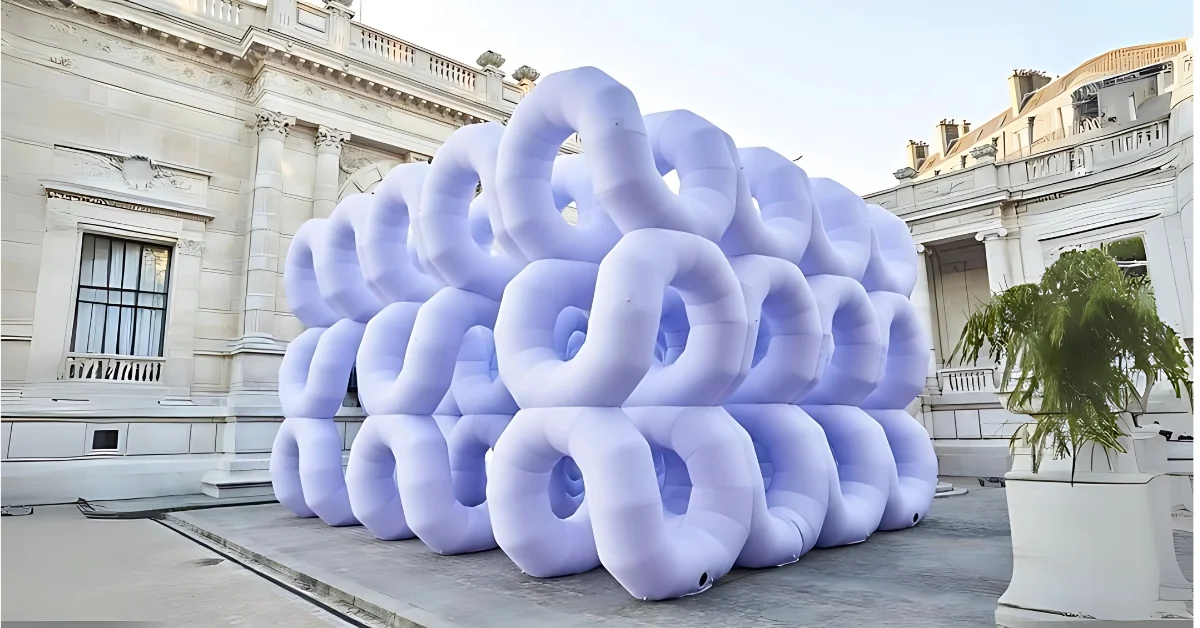Did you know that Alexander Calder Tubes EA, a pioneering figure in modern art, revolutionized the world of sculpture with his innovative kinetic art? His groundbreaking use of movement in sculptures set him apart from his contemporaries, and his artistic creations continue to inspire audiences worldwide. Among his most influential works is Tubes EA, a piece that demonstrates his mastery of industrial materials and kinetic design.
In this article, we’ll dive deep into the world of Alexander Calder, examining the significance of Tubes EA, and how this piece fits within his broader legacy. We’ll explore his techniques, materials, and the lasting impact his work has had on contemporary art.
Who Was Alexander Calder? A Pioneer of Kinetic Sculpture
Alexander Calder was born in 1898 in Pennsylvania, and he became one of the most important figures in 20th-century sculpture. Renowned for his work with mobiles and stabiles—sculptures that move or remain fixed—Calder’s artistry reshaped the traditional boundaries of sculpture. He was among the first to create sculptures that engage with their environment, using motion to breathe life into his works.
Early Life and Artistic Influences
- Calder came from a family of artists—his grandfather was a sculptor, and his father and mother were both painters.
- His studies at the Art Students League of New York and his exposure to modernist art movements, such as Cubism and Surrealism, greatly influenced his style.
- Calder’s early work involved creating small, abstract wire sculptures that became precursors to his later mobile designs.
The Invention of the Mobile
- In the late 1930s, Calder invented the mobile—a term coined by French artist Marcel Duchamp to describe Calder’s suspended, moving sculptures.
- Calder’s mobiles defied the traditional perception of sculpture as a static, grounded medium. They relied on air currents to create ever-changing patterns, captivating audiences with their dynamic presence.
Understanding ‘Tubes EA’: A Unique Piece in Calder’s Legacy
Tubes EA is a significant piece in Calder’s oeuvre. It demonstrates his unique ability to fuse industrial materials with artistic vision. The sculpture features tubular elements that are intricately manipulated to form dynamic shapes that seem to move with the air around them. Here’s an in-depth look at the piece:
Materials and Techniques Used in ‘Tubes EA’
- Industrial Tubing: As the name suggests, Tubes EA primarily features metal tubes, reflecting Calder’s fascination with industrial materials. These tubes are skillfully manipulated into abstract shapes, a hallmark of his work.
- Balance and Movement: Much like his mobiles, Tubes EA embodies the principle of balance. The carefully calculated arrangement of tubes enables the sculpture to interact with the environment, bringing it to life through motion.
- Color and Form: Calder’s use of bright colors and simple geometric forms adds visual vibrancy to Tubes EA, drawing viewers into its playful and energetic design.
How It Fits Within Calder’s Broader Work
Tubes EA is an excellent example of Calder’s transition from traditional sculpture to modern, abstract forms. It shares similarities with his other works, particularly his stabiles and mobiles, in terms of materials, structure, and dynamic interaction with the surrounding space.
The Role of Tubes in Calder’s Art
Calder’s use of metal tubing in his sculptures is a defining characteristic of his work. Tubes allowed him to experiment with scale and form while maintaining a lightweight structure that could still move and balance.
Exploring Tubes in Calder’s Sculptures
- Dynamic Designs: In sculptures like Tubes EA, Calder used tubular forms to create balance and movement, key features that were central to his artistic philosophy.
- Fluidity and Motion: The curved and flowing shapes of the tubes echo the fluidity and motion Calder sought to represent in all his sculptures.
- Visual Impact: Tubes offered Calder a way to create large-scale sculptures that maintained a sense of grace and balance despite their industrial materials.
Where to See ‘Tubes EA’ and Other Iconic Calder Sculptures
Calder’s art continues to captivate audiences, and Tubes EA is no exception. If you’re interested in experiencing Calder’s genius firsthand, here are some places where you can see his sculptures, including Tubes EA:
- The Whitney Museum of American Art (New York)
Home to a vast collection of Calder’s work, the Whitney Museum offers an opportunity to explore his dynamic sculptures in person. - The Museum of Modern Art (MoMA) (New York)
MoMA features several iconic Calder pieces, including A Universe, which showcases his signature use of motion and industrial materials. - National Gallery of Art (Washington, D.C.)
The East Building of the National Gallery features one of Calder’s mobiles, allowing visitors to witness the delicate balance and movement he perfected.
The Enduring Legacy of Calder’s Work in Contemporary Art
Calder’s influence extends far beyond his lifetime. His innovative use of materials and the integration of motion into sculpture have inspired generations of artists. Today, his work remains relevant in the world of contemporary art, and his techniques are studied by those seeking to innovate in their own creative practices.
Artists Influenced by Calder’s Techniques
- David Smith: Known for his own innovative sculptures, Smith was influenced by Calder’s use of industrial materials and geometric forms.
- Jean Tinguely: This Swiss artist’s kinetic sculptures drew heavily from Calder’s mobiles and stabiles, emphasizing the interplay between movement and structure.
Continued Relevance in Modern Art
Calder’s sculptures continue to inspire modern artists, architects, and designers. His mastery in creating works that move and interact with their environment has influenced many areas of contemporary art and design, from interactive installations to modern public art.
Conclusion About Alexander Calder Tubes EA
In conclusion, Tubes EA represents one of Alexander Calder’s most innovative works, blending industrial materials with artistic vision. Through this piece and others, Calder introduced motion into the static world of sculpture, changing the way we interact with art. His legacy continues to influence contemporary artists, and his works remain a testament to the creative possibilities of combining art and technology.



